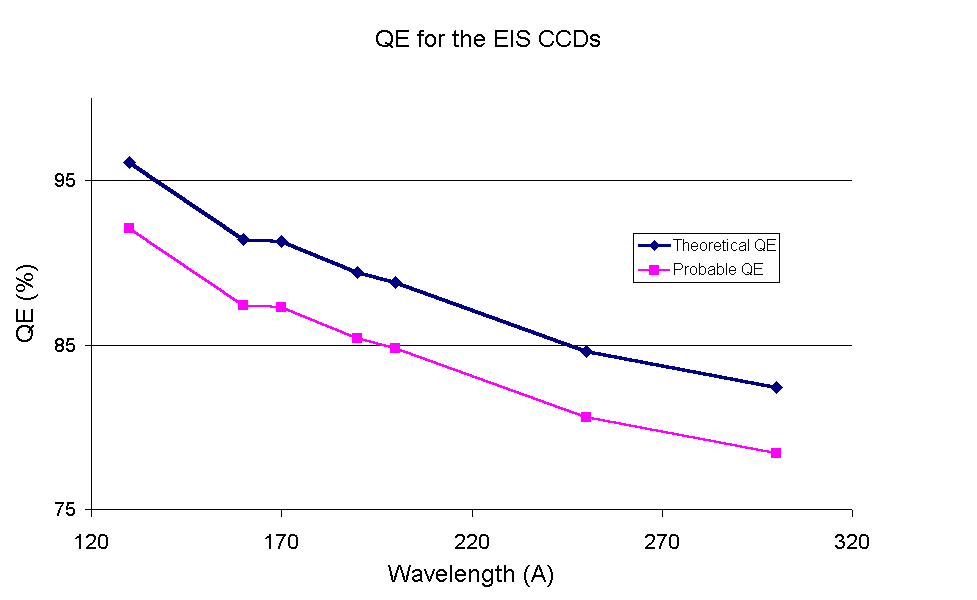
The CCDs are of course operating in the Extreme Ultraviolet and so will be backthinned. The resultant QE that we expect has been calculated and is shown below, based on the method of Stern et al. (1994). Basically, there will be a couple of key parameters that will determine the Q.E. at any wavelength. Firstly, the net transmission of photons through the backside oxide after correcting for surface reflectivity. Secondly, the photon absorption length at the wavelength of interest.
The calculated Q.E is shown below. A couple of measurements of the Q.E. of Marconi Applied Technologies 42 series CCDs have been made (although not by us). These values were slightly lower than the calculated Q.E and so I have added a second line showing the probable Q.E. that the EIS CCDs may have. The Q.E. that we eventually end up will probably be somewhere between these two lines.

Reference
Quantum efficiency measurements and modeling of ion implanted, laser-annealed charge-coupled devices: x-ray, extreme ultraviolet, ultraviolet, and optical data. Robert A. Stern, Lawrence Shing and Morley M. Blouke. Applied Optics, vol 33, No. 13, 2521-2533, 1994